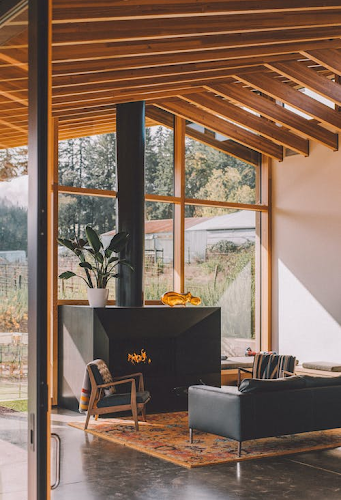In the world of art and aesthetics, design styles serve as the unique fingerprint of an era, reflecting the social, technological, and cultural changes of the time. They serve as markers in history that influence our everyday life, from the furniture we choose to the architecture that surrounds us. One of the most influential styles to emerge in the last century is mid-century modern design, a movement born in the heart of the 20th century that resonates powerfully with contemporary sensibilities.
Mid-century modern design, characterized by simplicity, functionality, and an embrace of nature, was a response to the changing times of the mid-1930s to mid-1960s. It swept the design world with its innovative use of form and materials, offering a fresh perspective on living spaces. This article explores the vibrant history of this enduring design style, examines its key characteristics, and explores its profound impact and influence.
Table of Contents
Background
The mid-century modern design era originated in the period spanning from 1933 to 1965, a time of profound global change. This was an era marked by the end of the Great Depression, World War II, the dawn of the Space Age, and the rise of a prosperous middle class. This mid-century modern interior design style emerged primarily in America, though its roots can be traced back to the earlier Bauhaus movement in Germany, which championed the marriage of design and function. As such, mid-century modern design was inherently forward-looking, embracing new materials and technologies, while being guided by the principle that form should follow function.
This design style was shaped by a host of cultural and social changes. Rapid urbanization, a desire for post-war domestic simplicity, and an increasing embrace of nature, all played a part in the development of this style. Notable designers such as Charles and Ray Eames, Eero Saarinen, and George Nelson were instrumental in this design movement. Their works were not just beautiful to behold but also celebrated functionality and ease of use. Their creations were embodiments of the era’s optimism, marrying practicality with a love for organic form and modern aesthetics.
Key Characteristics of Mid-Century Modern Design
Functionality and Minimalism
The philosophy of “form follows function” was integral to this movement, resulting in designs that were as practical as they were visually appealing. Unnecessary ornamentation was discarded, highlighting the beauty in simplicity and utility.
Organic Influences and Use of Modern Materials
Designers explored with non-traditional materials like plastic, plywood, and bent tubular steel, while drawing inspiration from organic shapes. This resulted in designs that felt simultaneously natural and modern.
Nature
Architects used large windows and open floor plans to blur the lines between the interior and exterior. This design approach was a nod to a growing environmental consciousness and a desire to bring the outdoors inside.
Uncluttered and Geometric Forms
Designs combined both organic forms, inspired by nature, and geometric forms, influenced by a modern, industrial aesthetic. This combination of forms resulted in a harmonious blend of organic warmth and industrial coolness.
Vibrant and Contrasting Colors
While the designs were often minimalist, the use of color was anything but restrained. Vibrant hues and contrasting colors were frequently used to inject personality into spaces. The color palette typically ranged from muted and earthy tones to bold and bright shades, creating visually captivating and dynamic spaces.
The Influences and Impact of Mid-Century Modern Design
Its principles of functionality, simplicity, and integration with nature have become cornerstones of many modern design philosophies. The movement’s emphasis on sleek lines and minimal ornamentation continues to resonate with today’s design sensibilities. This can be seen in everything from furniture to digital design, where usability and minimalism are highly valued.
The impact of the mid-century modern design extends to architecture, furniture design, and graphic design. The movement pioneered architectural designs that prioritized open floor plans and large windows, inviting natural light into the interior spaces. In furniture design, the era was marked by iconic pieces that blended functionality and aesthetic appeal, like the Eames Lounge Chair or the Noguchi Table. The influence can also be seen in graphic design, where simplicity and a clear communication of function were prioritized. Beyond the borders of its American origin, the style also had a global reach, influencing design sensibilities in different parts of the world, and continues to remain a popular choice in various design disciplines today.
Significant Mid-Century Architecture and Interior Design Projects
Iconic examples include the Eichler homes in California, which championed open floor plans, large glass windows, and integration with nature. The Gropius House, designed by Walter Gropius, fused traditional elements with innovative materials and design principles. In interior design, the use of open spaces, functional furniture, natural light, and vibrant color schemes became the defining characteristics of this era. These design principles continue to influence architectural and interior design trends today.
Mid-century modern design, born out of the mid-20th century, continues to reverberate in our contemporary design landscape. Its principles of functionality, simplicity, and the harmonious blend of natural and modern elements serve as a timeless source of inspiration. Whether you’re an architect, interior designer, furniture maker, or simply a homeowner looking to infuse some classic design into your space, the enduring appeal of mid-century modern design offers a rich and varied palette to draw from.

